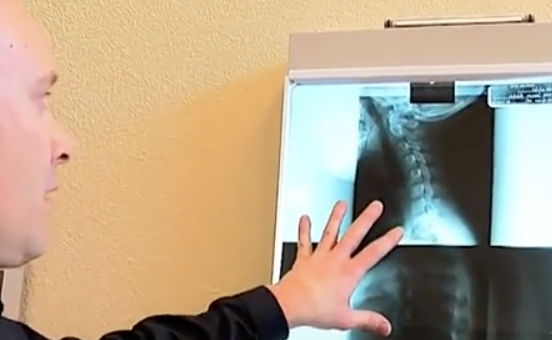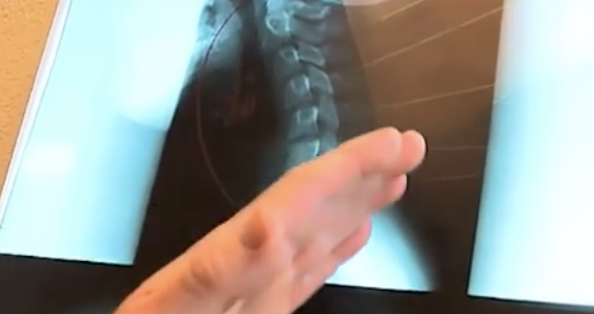Teen Girl Was Feeling Intense Neck Pain. Her Parents Were Horrified After The Doctors Diagnosed Her.

Kids these days! Some of them are spending up to 5,000 hours a year reading texts and browsing online, all while hunched over looking down at their cell phones and laptops. On average, a person spends around 2-4 hours a day crooked over looking down at their personal devices, and young adults spend even more time than that, logging hours at a time in one sitting.

It doesn’t matter whether it’s a computer, tablet, or cell phone screen, because they all require the user to angle their head down, bending their necks in the process. This relatively new behavior is leading them to develop what is now called “text neck,” an uncomfortable and chronic pain in the neck area.

Text neck occurs when the proper and normal curve in the cervical spine becomes reduced and in some cases it may even move forward. Ideally a person wants to have a 40 degree curve in their spine, but x-rays of text neck sufferers show curves so drastic that they actually have reversed and bend forward in the opposite direction. This type of reversed spinal curvature used to take years to develop and was only seen in older and elderly adults.

More and more sufferers of text neck are showing up at doctors offices nationwide seeking relief for their aches and pains. They are also increasingly younger and setting themselves up for a variety of possible problems that go beyond general neck pain, including shoulder tension, migraines, and even numbness and tingling sensations down their arms.

In order to correct the problem sufferers require physical therapy, trips to the chiropractor, and lifestyle changes. To reverse damage, professionals use head weights, shoulder exercises, resistance bands, and adjustments to recondition and strengthen the patient’s shoulder, neck, and back muscles.

For people reading this and others who may be concerned about text neck, there are less drastic things that can be incorporated into your everyday routine to avoid it. Firstly, it’s important to sit up straight and stop looking down at phones and devices. Instead, hold your phone up higher so that it’s right in front of your face and eyes.

There is even an app available that blinks a red light warning you to raise it higher, in order to help people remember to elevate their phones. Also stand up more often throughout the day and stretch, roll your shoulders, and move around. Just by being aware and conscious of what you are doing, and for how long, can help you avoid tech neck and all the uncomfortable aches and pains that come with it.

Please Share This Story With Family and Friends To Help Raise Awareness




